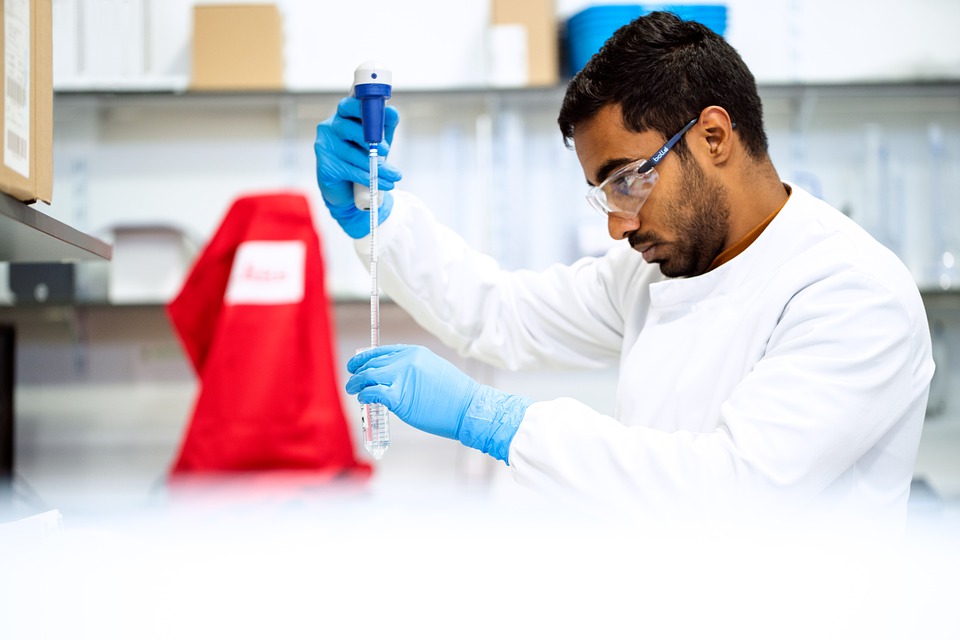With the introduction of the biomedical model during the 19the century, the influence of traditional health models, which we now know as complementary or alternative medicine, diminished significantly under the onslaught of the new scientific ways of approaching health.
So, let’s take a closer look at the biomedical model.
The Biomedical Model
The biomedical model, on which contemporary medical practice is based, consists of four core elements:
- Mind-body Dualism
- Specific Aetiology
- Mechanical Metaphor
- Objective Science
-
Mind-Body Dualism

This refers to the belief that the mind and our ways of thinking can be completely separated from the body. The concept developed as a result of the way that scientific thought itself emerged in the 17th century under the influence of the philosopher René Descartes. Descartes’s argument was that the mind was the controlling force of the body, which acted at the will of the mind. The mind was therefore distinct from the body. This was in opposition to the teachings of the time. The Catholic Church saw the body and mind (and soul) as inseparable. The gradual acceptance of Descartes’ ideas and the decline in the influence of the Catholic Church led to the belief that it was morally correct to dissect bodies for anatomical research. As a result of this research, explanations were developed about how the body “worked.” A longer-term result was that disease was seen as the outcome of some malfunctioning part of the body, while the mind and wider social factors came to be seen as irrelevant.
-
Specific Aetiology

It is how modern medical models assume a specific cause for a disease (such as a virus or bacteria) and by targeting this cause, the disease can be cured. This idea of narrowing down the cause to a specific causal agent was strongly influenced by the work of researchers such as Pasteur and Koch, both of whom worked in the 19th century.
Until the work of Pasteur on bacteria and Koch on the tubercle bacillus (which causes TB, a disease which was a major killer in Britain until the early 20th century), it was generally believed that disease was caused by “miasma” or “polluted air.” Miasma could be detected by unpleasant smells and was the result of dirt and decay.
Pasteur and Koch showed instead that specific microorganisms were transmitted in a variety of ways, including coughs, sneezes and in water. Through these means, humans pass on infections to each other. As a result of this, medicine came to view all diseases as having a specific cause (Aetiology refers to searching for “the cause”). Finding and addressing this particular cause would lead to a cure.
-
Mechanical Metaphor

Doctors regard the human body as similar to a very complex and advanced machine. They look at the functions that each part of the body performs and seek to “repair”, heal or replace the non-functioning parts. This mechanical metaphor also derived from the division between the mind and body and the emergence of the belief in specific Aetiology. According to Thomas Dixon, “with the establishment of specific disease categories, the main task of diagnosis became that of examining and measuring the individual’s body to determine what exactly the “symptoms” were and then to compare these to the known symptoms produced by a particular disease. The patient’s condition could then be classified and treated. Disease came to be regarded as universal and independent of culture or background.
Freund and McGuire claimed that, “the acceptance of the mechanical metaphor has led to medicine ‘developing specialization along the lines of the machine parts, emphasizing individual systems or organs to the exclusion of the totality of the body.’”
-
Objective Science

The objective science of medicine is the belief, widely accepted in most scientific and even social scientific disciplines, that there is such a thing as the scientific method, which provides the ‘truth’ about the object under study. By rigorously following the correct methods, the results will reveal an objective reality.
Were you able to learn more about the biomedical model today? Please share your comments!


